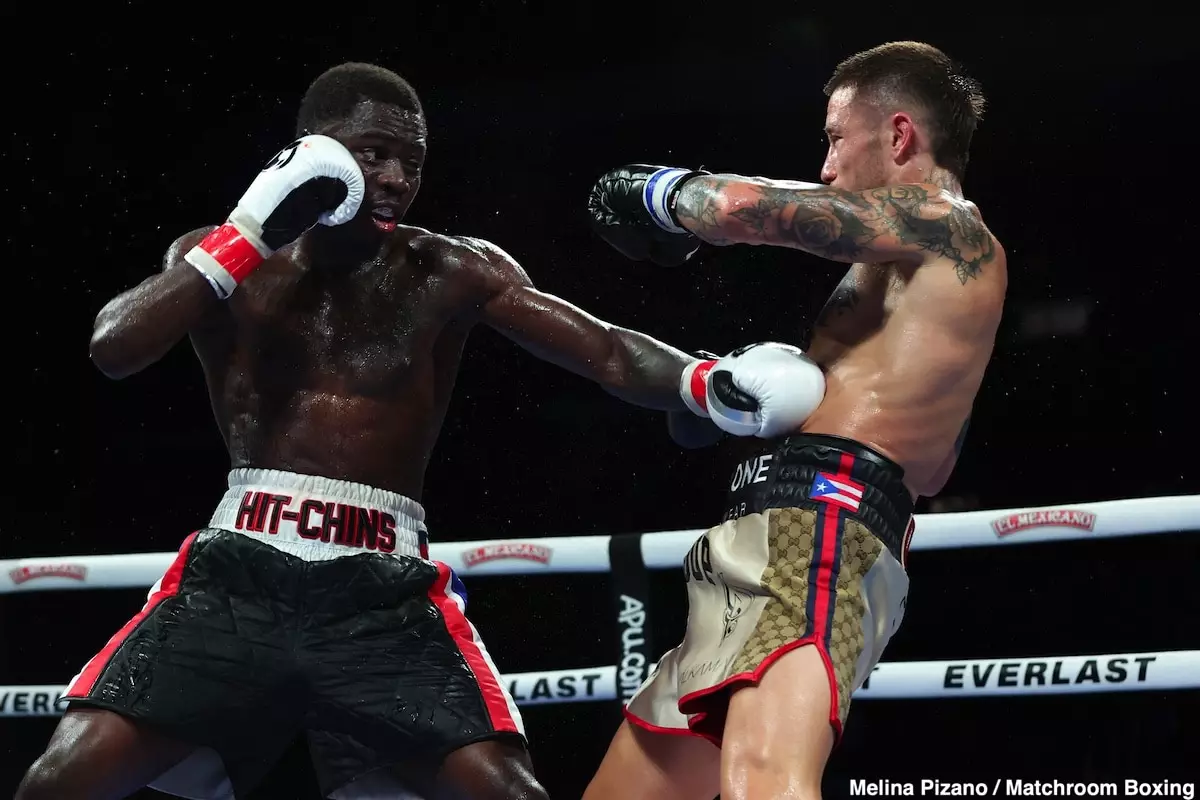Recent developments in the boxing scene have sparked a whirlwind of discussions, particularly around the ongoing saga between IBF light welterweight champion Richardson Hitchins and WBO champion Teofimo Lopez. Central to the narrative is a claim that Hitchins made a staggering request for $2.5 million to fight Lopez on May 2nd, which Hitchins vehemently denies. He maintains that he was never presented with an official offer to engage in a bout with Lopez, leading to broader questions regarding the dynamics between the two fighters.
Hitchins seems perplexed by Lopez’s assertions, describing them as a misrepresentation of events. With the backdrop of the highly anticipated fight card taking place at Times Square in New York City, Hitchins insists that his focus was squarely on taking the path of Arnold Barboza Jr., not out of monetary considerations but rather out of strategic choice. This situation reveals a classic case in boxing where fighters may distort narratives in the public eye, potentially for promotional purposes, creating captivating storylines to hook fans.
The heart of this conflict raises questions about Lopez’s intentions. In the current landscape of boxing, fighters often seek to position themselves in ways that maximize their visibility and revenue potential. For Hitchins, the assertion that a $2.5 million request was made quickly exposes the reality of Lopez’s indecisiveness regarding a matchup with him. By opting for Barboza instead, Lopez appears to be taking a safer route, perhaps aiming to bolster his record without putting himself in the line of fire against a formidable competitor like Hitchins.
When boxers engage in social media banter, it becomes evident that much of the narrative evolves not just through matches but through perception and strategic maneuvers off the ring. Lopez’s choice not to pursue a fight against Hitchins, whom he claims is unworthy of such a financial figure, sheds light on the disparity in star power. Hitchins argues that as a current champion, he should command interest comparable, if not superior, to Barboza’s. The juxtaposition of their reputations leads to critical reflections on what constitutes “worth” in boxing.
Moving forward, the chatter surrounding a possible future encounter between Hitchins and Lopez brings forth an intriguing storyline. Despite the apparent ice between them, Hitchins remains hopeful for a face-off after his defense against Barboza. He understands the nature of boxing as fluid and evolving; fights can rekindle based on performance and market demands. The realistic nature of boxing dictates that with favorable showings, fighters can find themselves back in the conversation, leading to matchups that ignite fan interest.
There’s also talk of other viable options for Hitchins, including the possibility of matching up with George Kambosos, indicating that the light welterweight division remains ripe with potential clashes that could redefine narratives. This uncertainty offers excitement for fans who crave action but also brings a sense of caution, as amateur discussions too often lead to unfulfilled promises.
Ultimately, the unfolding drama between Richardson Hitchins and Teofimo Lopez serves as an insightful lens on the larger context of boxing today. With fighters grappling not just with physical opponents but also with the careful balancing act of worth, positioning, and public persona, the implications of such disputes are significant. Hitchins argues for respect in the ring based on merit and achievement, while Lopez navigates the waters of high-stakes decision making and public perception.
The boxing fraternity must now weigh the tension between financial aspirations and genuine competitive spirit. As these stars continue their journeys within the sport, the future remains uncertain yet brimming with possibilities. The imminent fights, alongside the underlying narratives, could in fact lead to storylines that are both riveting and pressingly relevant, drawing in not just the seasoned followers of the sport, but also new fans keen on witnessing the spectacle that is modern boxing. Therefore, it is crucial for both fighters to understand that the paths they choose will resonate beyond the outcomes, shaping their legacies in a sport that thrives on narrative as much as it does on competition.

